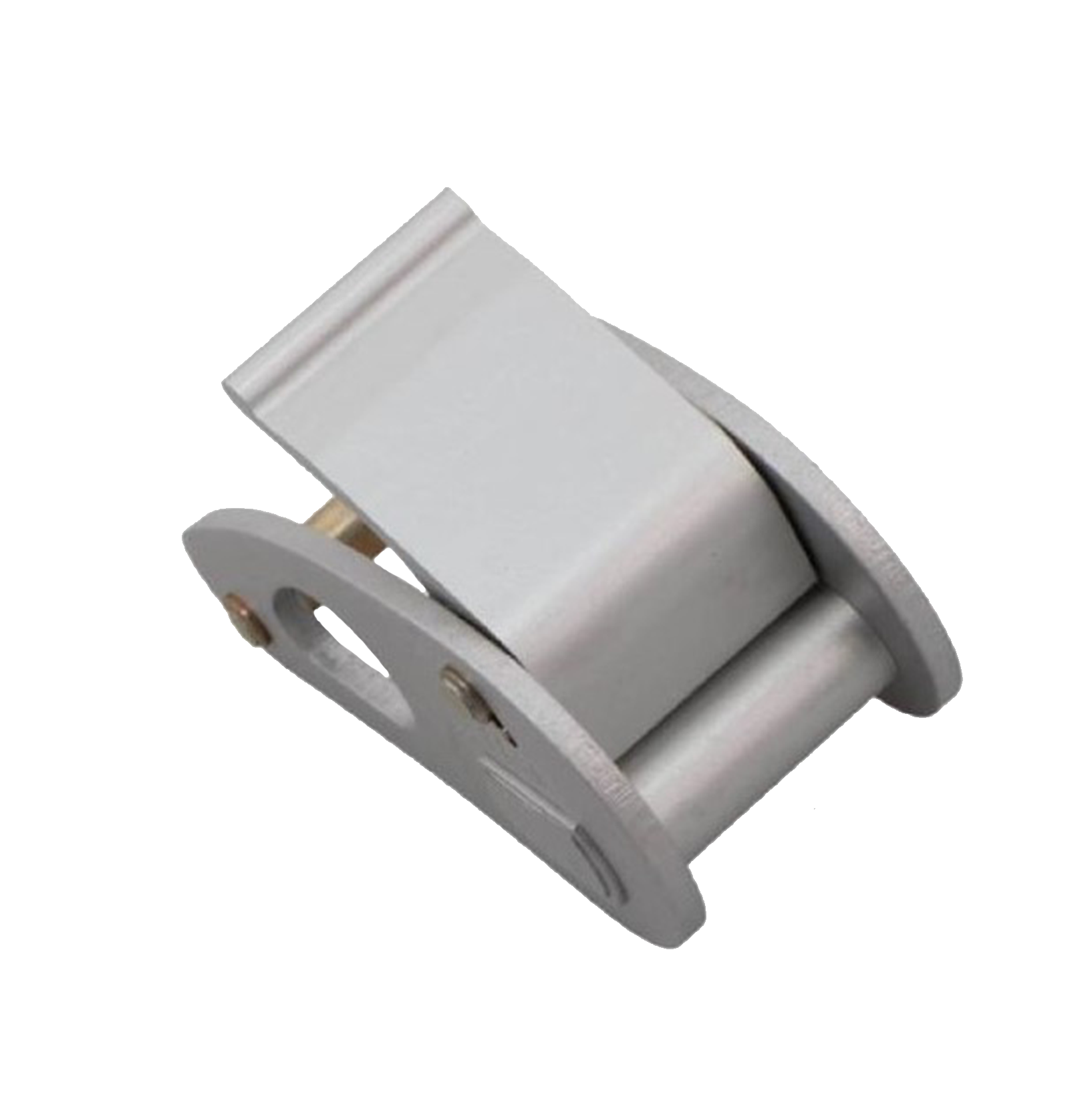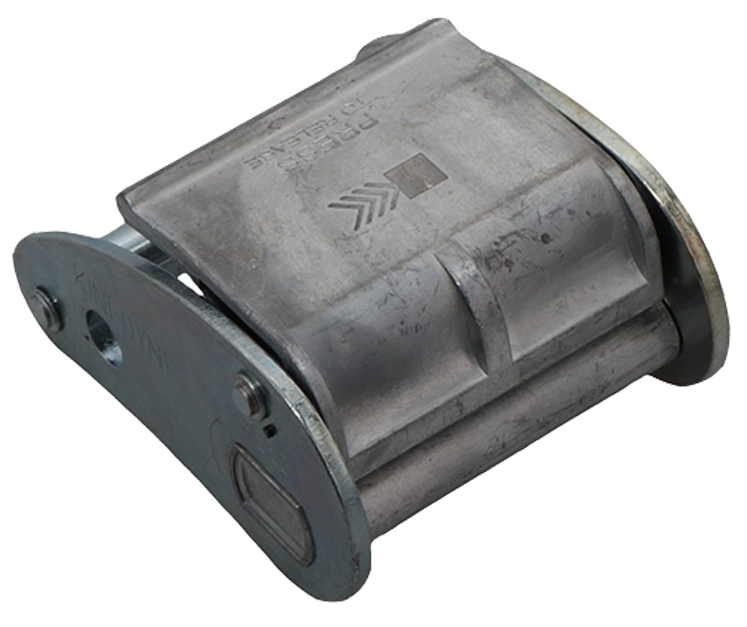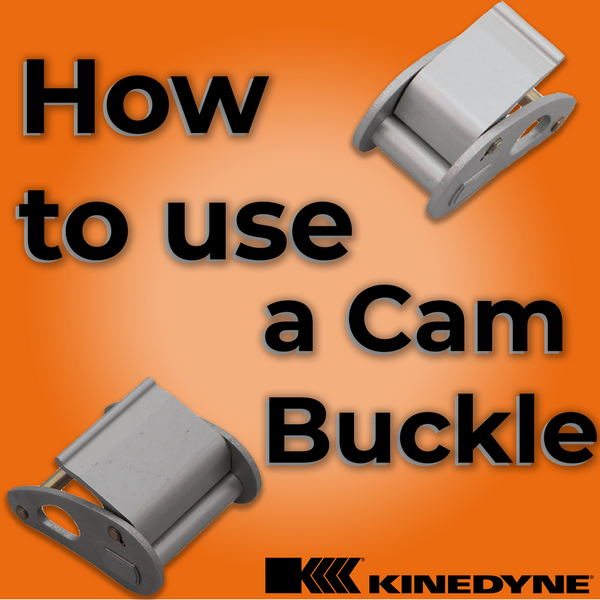How to Use a Cam Buckle
Not all cargo requires the heaviest securement. That’s why cam buckles were designed to tighten webbing straps quickly and easily. Cam buckles are a hand-tightened alternative to ratcheting down a strap
Because it’s easier to control the amount of tensioning by hand, a cam buckle will easily handle tie-down jobs that don’t require the much greater degree of force applied by a ratchet buckle. What’s more, as ratchet buckles are bulkier, they may cause some damage to some cargo.
Cam buckles can be used to secure lighter-weight or fragile cargo but can be used for any cargo that the Working Load Limit (WLL) is appropriate for. Not only can a cam buckle be faster and easier to a ratchet, another key advantage of using a cam buckle is that fragile items, such as the surfaces of antique furniture and other brittle items of value, are far less likely to be damaged when straps are tightened to secure them.
Hands at Work
A cam buckle can tighten a strap only as much as the force of your hand can physically tighten it. Cam buckles feature a clip that works akin to a belt. When the tie-down strap is pulled through and the cam buckle released, the strap is secured into place.
Cam buckles are commonly used by movers to protect delicate cargo, especially to prevent damage beyond repair to customers’ valuables.
When it comes to securing delicate cargo with industrial strength, cam buckles are the way to do it. Kinedyne offers 1-inch and 2-inch cam buckles designed to keep a strong and secure grip on webbing straps.
The buckles are constructed of durable diecast zinc alloys and carbon steel with an anti-corrosion zinc plated finish. Also available are cam buckles that are National Aerospace Standard compliant; these are marked with an NAS Number.
Simple to Operate
Because the cam buckle has a very simple design, it’s very easy to operate. Securing a load with a cam buckle is a straightforward manual approach:
1. First, lift the trigger and then thread the 1-inch or 2-inch webbing through the bottom of the buckle.
2. Pull until the desired tension is achieved.
3. Then release the trigger. The cam buckle will firmly lock down onto the strap, securing a reliable hold over the cargo.
4. When it’s time to unload, just press the cam to release the tension on the strap.
Specifications: 1-inch Cam Buckle
The 1-inch cam buckle possesses the kind of finesse needed to handle tie-down jobs while still delivering the necessary strength. Pair this size cam buckle with a strong 1-inch webbing and durable end fittings to gain a reliable way to, for example, secure a sheet of glass without accidentally cracking it.
The amount of tension depends on the amount of force you use to tighten down the load, so there’s less of a risk of over-tensioning the strap with a 1-inch cam buckle. Kinedyne also carries 1-inch cam buckles designed with a simpler one-piece frame that’s easier to operate.

Specifications: 2-inch Cam Buckle
Need enough strength to secure a load, but enough finesse to not cause any cargo damage? That’s where 2-inch cam buckles come into play. These flexible and durable tensioning devices are engineered to provide reliable securement without the overbearing force or bulky design of a ratchet buckle. This makes them ideal for smaller tie-down jobs for cargo like glass or windows that require a reliably secure yet lighter touch.
Don’t be fooled by their size, though. The 2-inch cam buckle boasts the strength to keep your cargo in place. For an even simpler tie-down solution, Kinedyne carries 2-inch cam buckles that are engineered with a one-piece frame.
A note on maintenance: Every cam buckle’s cam-pin joint should be periodically lubricated with a spray lubricant to keep the lever operating properly. Taking care of this regular maintenance procedure can help extend the in-service life of your cam buckles.

Learn More
For more information about the various types of chain binders, watch our "How to Use a Cam Buckle 201" video above. This video is part of the Kinedyne Education Series of introductory videos designed to teach the basics of cargo control products – what they are, what they are used for, and how to choose the right tools for the job. To view more Kinedyne videos, click here.
 US Dollars
US Dollars


 CA EN
CA EN
 MX ES
MX ES
